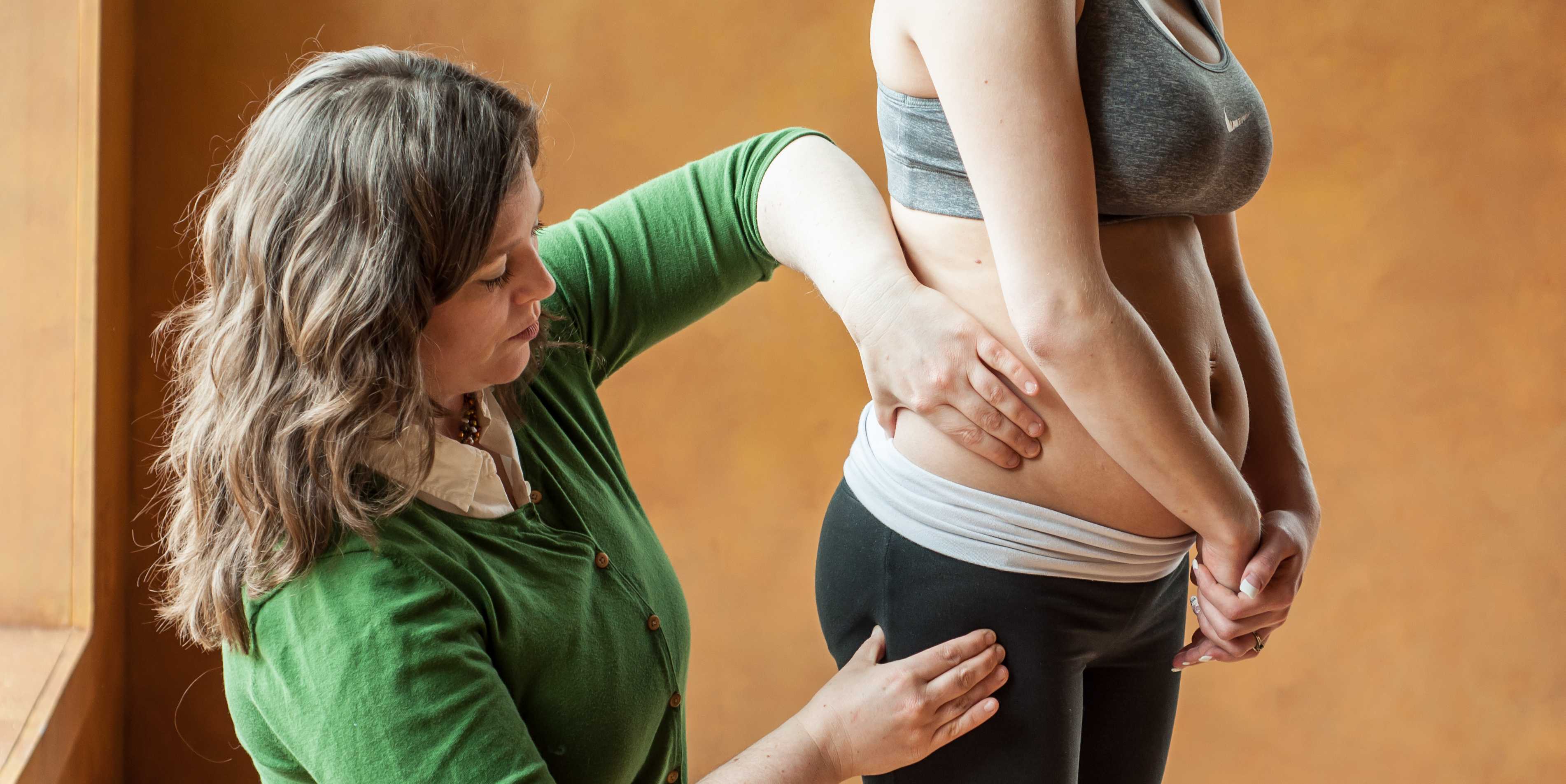
As pelvic rehabilitation continues to evolve, so does our understanding of how to access and modulate the intricate neuromuscular systems that govern pelvic floor function.
Dry needling — long employed in orthopedic and sports medicine settings — is now emerging as a potent tool in the pelvic health therapist’s repertoire. Its precise application can yield neurophysiologic effects far beyond simple trigger point release, particularly when integrated with a broader neuromodulation framework.
The Rationale for Dry Needling in Pelvic Health
Dry needling involves the insertion of a monofilament needle into myofascial, peri-neural, or connective tissues to elicit a therapeutic response. In the pelvic region — where layered dysfunction may involve somatic, autonomic, and visceral pathways — dry needling offers:
- Direct modulation of overactive or inhibited pelvic floor muscles
- Reduction of peripheral nociceptive input from sensitized tissues
- Central downregulation of pain pathways through segmental and supraspinal mechanisms
- Neurovascular and neuroimmune effects that influence tissue health and pelvic organ function
Beyond Trigger Points: Neuromodulatory Targets
While trigger point deactivation is often cited as the primary mechanism, advanced practitioners now utilize dry needling to target peripheral nerves, spinal segmental reflex arcs, and viscerosomatic convergence zones relevant to pelvic dysfunction.
Key neuromodulatory targets include
- Obturator internus and levator ani — often hypertonic in cases of dyspareunia, pudendal neuralgia, or levator ani syndrome. Precise needling can reduce motor overactivity and pain referral.
- Sacral multifidi and paraspinals (S2–S4) — modulate pelvic floor reflex activity and impact bladder and bowel control.
- Gluteus maximus and piriformis — indirectly influence pudendal nerve path and pelvic floor muscle tone.
- Tibial nerve (posterior medial leg) — part of the sacral micturition reflex; targeted in dry needling or electroacupuncture for urge incontinence or bladder pain syndrome.
- Adductor group and iliopsoas — affect pelvic floor positioning and contribute to postural-driven pelvic dysfunction.
Additionally, cutaneous neurogenic zones, such as the sacral dermatomes and perineal region, may respond to superficial needling for neurosensory desensitization.
Application to Common Conditions
Pelvic Pain
Chronic pelvic pain involves peripheral tissue dysfunction, central sensitization, and autonomic dysregulation. Dry needling can:
- Interrupt pain-spasm-pain cycles
- Reduce afferent signaling from hyperactive pelvic muscles
- Decrease neuroinflammation via neuromodulation of spinal circuits
- Be combined with breathing techniques or down-training for improved autonomic regulation
Incontinence and Voiding Dysfunction
In urge incontinence, overactive detrusor activity may be linked to sacral reflex hyperexcitability. Dry needling — particularly of the posterior tibial nerve or S2–S4 paraspinals — may:
- Normalize afferent signaling to the pontine micturition center
- Restore motor balance between detrusor and external sphincter
- Improve pelvic floor muscle recruitment patterns when combined with EMG biofeedback
Sexual Pain or Dysfunction
In cases of vaginismus, vestibulodynia, or erectile dysfunction with pelvic myalgia, dry needling can:
- Reduce hypertonicity in the deep pelvic bowl (e.g., obturator internus, pubococcygeus)
- Increase local blood flow and nitric oxide release
- Support somatosensory reintegration, especially when layered with trauma-informed approaches
Integrating Dry Needling with Broader Neuromodulation Techniques
To fully leverage dry needling’s neuromodulatory capacity, it should be part of a multimodal care plan that may include:
- Electrical stimulation (e.g., intramuscular or percutaneous tibial nerve stimulation)
- Neurodynamic mobilization (e.g., pudendal nerve glide protocols)
- Manual therapy for visceral and connective tissue tension
- Somatic-based interventions for nervous system regulation and interoceptive awareness
- Behavioral strategies such as urge suppression techniques, pacing, and pelvic mapping
Safety and Clinical Reasoning
When applied near sensitive neurovascular and visceral structures, dry needling requires precise anatomical knowledge, informed consent, and advanced training. Ethical practice includes:
- Always using non-threatening, anatomically accurate language
- Avoiding direct needling of internal pelvic structures unless well-trained and permitted by state practice acts
- Employing real-time patient feedback and graded exposure techniques to minimize reactivity and optimize nervous system response
Clinical Pearls
- Always assess for central sensitization — if present, reduce peripheral input gradually and combine with education and graded sensory integration.
- Use ultrasound guidance or EMG if available for difficult-to-access muscles or when precision is paramount.
- Needle outside the pelvic floor (glutes, paraspinals, tibial nerve) when internal work is contraindicated, poorly tolerated, or not functionally required.
- Watch for signs of autonomic shift during or after treatment — sweating, dizziness, nausea — and manage with pacing and grounding techniques.
Dry needling is more than a mechanical intervention — it is a powerful interface with the nervous system. When skillfully applied, it opens new doors in the treatment of complex pelvic floor dysfunctions, especially those involving pain, inhibition, and neuromotor disruption. For advanced pelvic rehabilitation therapists, dry needling represents an opportunity not just to treat, but to modulate — to recalibrate the body’s own self-regulating systems toward a state of ease, control, and embodied safety.
Recommended Continuing Education:
Dry Needling and Pelvic Health: Foundational Concepts and Techniques — SOLD OUT
This course is the first in our pelvic health dry needling series. Designed for pelvic health practitioners, it teaches foundational dry needling techniques for treating pelvic floor and neuromusculoskeletal conditions such as lumbopelvic pain, incontinence, voiding issues, and sexual dysfunction. Participants will learn safe and effective needling for the female pelvic floor, as well as related areas including the spine, abdomen, pelvis, and hips. The course includes anatomy review, safety guidelines, plenty of lab practice, and clinical integration strategies.
Dry Needling and Pelvic Health Level 2: Advanced Concepts and Neuromodulation – August 2-3 in Duluth, MN
This advanced dry needling course offers a specialized approach to treating pelvic floor dysfunction related to pelvic pain, incontinence, voiding issues, and sexual pain. Participants will learn to apply dry needling techniques to both male and female pelvic floor muscles, as well as related areas like the spine, abdomen, pelvis, and hips. The course also covers neuromodulation concepts and techniques. Emphasis will be placed on anatomy review, safety, clinical reasoning, and hands-on lab practice to ensure confident and effective application in clinical settings.
Dry Needling and Pelvic Health: Pregnancy and Postpartum Considerations – August 23-24 in Lemont, IL
This course offers a specialized dry needling approach for treating neuromusculoskeletal conditions during pregnancy and postpartum. Topics include pelvic pain, carpal tunnel, plantar fasciitis, peripheral neuropathy, postural changes, and headaches. Participants will learn safe and effective needling techniques for the extremities, spine, and pelvic floor, with a focus on anatomy, safety, clinical application, and hands-on lab practice.
Resources:
- Dommerholt J, Fernández-de-las-Peñas C. Trigger Point Dry Needling: An Evidence and Clinical-Based Approach. 2nd ed. Churchill Livingstone; 2018.
- Kalichman L, Vulfsons S. "Dry Needling in the Management of Musculoskeletal Pain." J Am Board Fam Med. 2010;23(5):640–46.
- Young JL, Snodgrass SJ, Cleland JA, Rhon DI. “The Role of Dry Needling in Musculoskeletal Dysfunction: An Evidence-Informed Perspective.” Phys Ther. in Sport. 2019; 39:139–49.
- Asavasopon S, et al. “Brain Activity Associated with Pain in Female Pelvic Floor Muscles: A Functional MRI Study.” Neurourology and Urodynamics. 2014; 33(5):7.




































